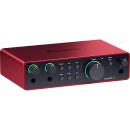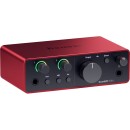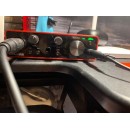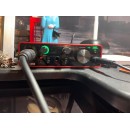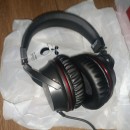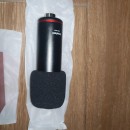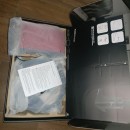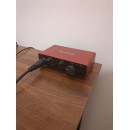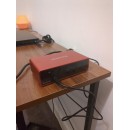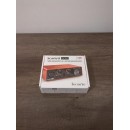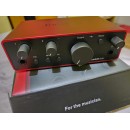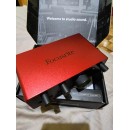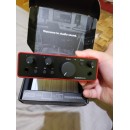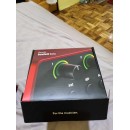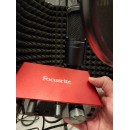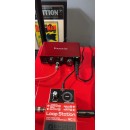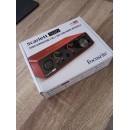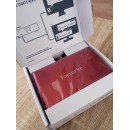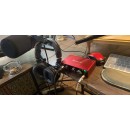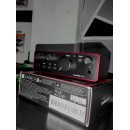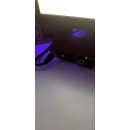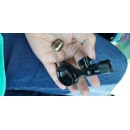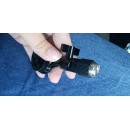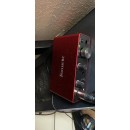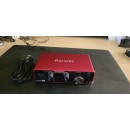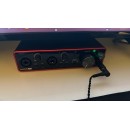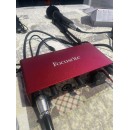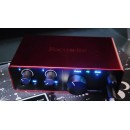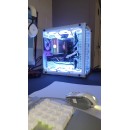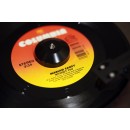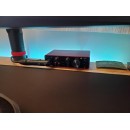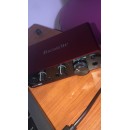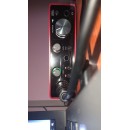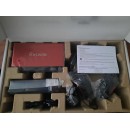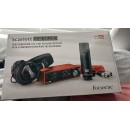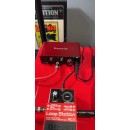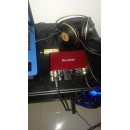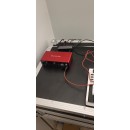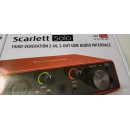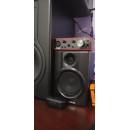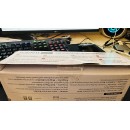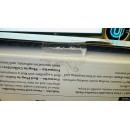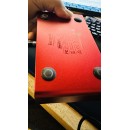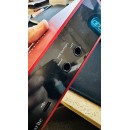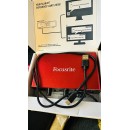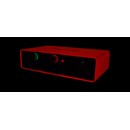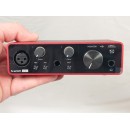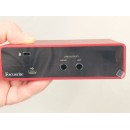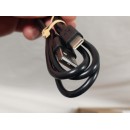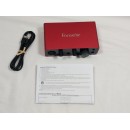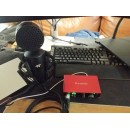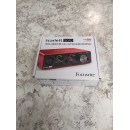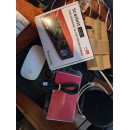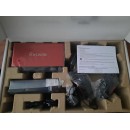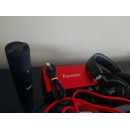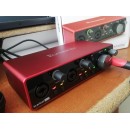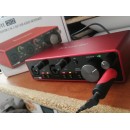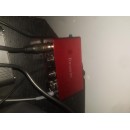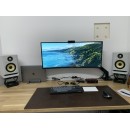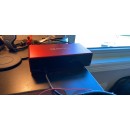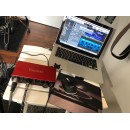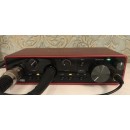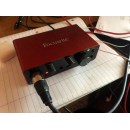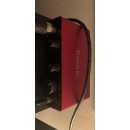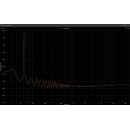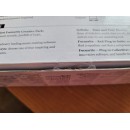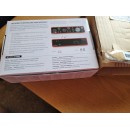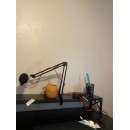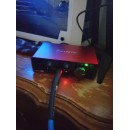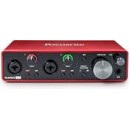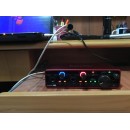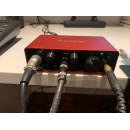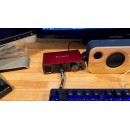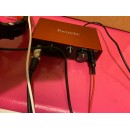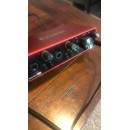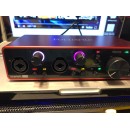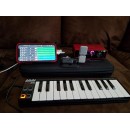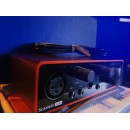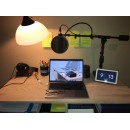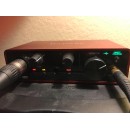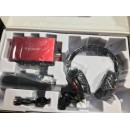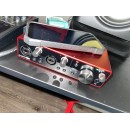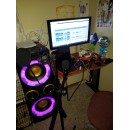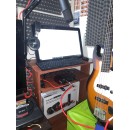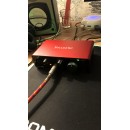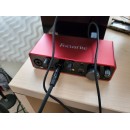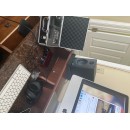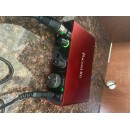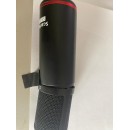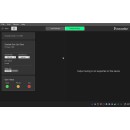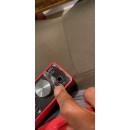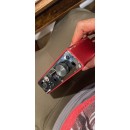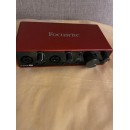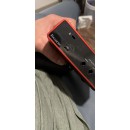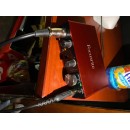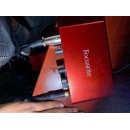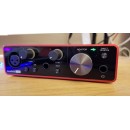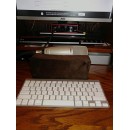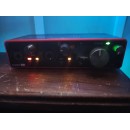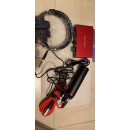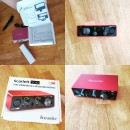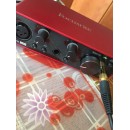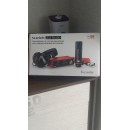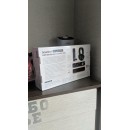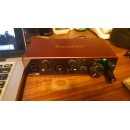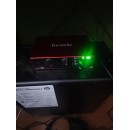Focusrite Scarlett Solo vs Scarlett 2i2: Which 4th Gen Audio Interface is Right for You?
The Scarlett 2i2 is a more versatile option, featuring two combo inputs that can accept both XLR and 1/4" (6.35 mm) connections. This allows you to simultaneously record two microphones, two instruments, or a combination of both. It also includes dedicated gain controls for each input, as well as 48V phantom power for condenser microphones. The 2i2 offers two balanced TRS outputs for connecting studio monitors, as well as a headphone output with its own level control. This model is ideal for users who need to record multiple sources at once, making it perfect for small bands, podcasters, or multi-instrumentalists.
On the other hand, the Scarlett Solo is designed for simplicity and ease of use, making it an excellent choice for solo artists and beginners. It features a single combo input for microphones or instruments and a dedicated instrument input, each with its own gain control and 48V phantom power for the microphone input. The Solo also includes a single headphone output and a pair of RCA outputs for connecting to speakers. While it lacks the dual input capability of the 2i2, its streamlined design makes it a straightforward choice for those who only need to record one source at a time.
Both interfaces share several key features, including high-quality preamps, low-latency performance, and USB-C connectivity for fast and reliable data transfer. They also come with a comprehensive software bundle that includes DAWs and various plug-ins to get you started on your recording journey.
In summary, the Focusrite Scarlett 2i2 (4th Generation) offers greater flexibility with its dual input capability and multiple output options, making it suitable for more complex recording setups. The Focusrite Scarlett Solo (4th Generation) provides a simpler, more focused solution for individual artists who require fewer inputs and outputs. Both models maintain Focusrite’s reputation for delivering excellent sound quality and user-friendly design.
Detailed Specifications and In-Depth Review: Focusrite Scarlett Solo vs Scarlett 2i2 (4th Generation)
| User Rating Based on Analysis of Reviews | |
|---|---|
|
Show More |
| Pros: | |
|---|---|
|
|
| Cons: | |
|---|---|
|
|
| Key Specs | |
|---|---|
| Channels of I/O | |
| Analog: 2 Inputs / 2 Outputs at 192 kHz |
Analog: 2 Inputs / 2 Outputs at 192 kHz |
| Maximum Sampling Rate | |
| 192 kHz / 24-Bit | 192 kHz / 24-Bit |
| Number of Microphone Inputs | |
| 2 | 1 |
| Analog Audio I/O | |
| 2x XLR 3-Pin Balanced Mic Input 2x 1/4" TRS Balanced/Unbalanced Line/Hi-Z Input (Front Panel) 2x 1/4" TRS Balanced Monitor Output 1x 1/4" TRS Headphone Output (Front Panel) |
1x XLR 3-Pin Balanced Mic Input 1x 1/4" TS Unbalanced Line/Hi-Z Input (Front Panel) 2x 1/4" TRS Balanced Monitor Output 1x 1/4" TRS Headphone Output (Front Panel) |
| Digital Audio I/O | |
| Host Connection | |
| 1x USB-C | 1x USB-C |
| OS Compatibility | |
| macOS Windows |
macOS Windows |
| Power Requirements | |
| USB Bus Power, USB Power Adapter (Not Included) | USB Bus Power, USB Power Adapter (Not Included) |
Both interfaces offer a maximum sampling rate of 192 kHz at 24-bit resolution and are equipped with USB-C connectivity, ensuring high-speed data transfer and compatibility with both macOS and Windows operating systems. Additionally, both devices are powered via USB bus power, though they can also utilize a USB power adapter, which is not included with either product.
In terms of analog audio input and output, the Scarlett 2i2 offers more versatility. It features two XLR 3-pin balanced mic inputs and two 1/4" TRS balanced/unbalanced line/Hi-Z inputs on the front panel. This makes the Scarlett 2i2 suited for users who need to record multiple sources simultaneously, such as a vocalist and an instrument. It also comes with two 1/4" TRS balanced monitor outputs and a 1/4" TRS headphone output on the front panel, allowing for more flexible monitoring options.
On the other hand, the Scarlett Solo is geared towards solo recording artists or podcasters. It provides one XLR 3-pin balanced mic input and one 1/4" TS unbalanced line/Hi-Z input on the front panel. While it also features two 1/4" TRS balanced monitor outputs and a 1/4" TRS headphone output, the lack of a second mic input makes it less suitable for recording multiple sources simultaneously.
Overall, the Scarlett 2i2 is more versatile with its additional input capabilities, making it ideal for more complex recording setups. The Scarlett Solo, however, offers a more streamlined interface for solo artists or podcasters who do not need multiple mic inputs. Both interfaces maintain Focusrite's reputation for high-quality audio and user-friendly design.
| General | |
|---|---|
| Channels of I/O | |
| Analog: 2 Inputs / 2 Outputs at 192 kHz |
Analog: 2 Inputs / 2 Outputs at 192 kHz |
| Built-In DSP | |
| Maximum Sampling Rate | |
| 192 kHz / 24-Bit | 192 kHz / 24-Bit |
| Number of Microphone Inputs | |
| 2 | 1 |
| Built-In Microphone | |
| Input Level Adjustment | |
| 2x Knob | 2x Knob |
| Expansion Slots | |
The most notable difference between the two models lies in their input configurations. The Scarlett 2i2 features two microphone inputs, allowing for greater flexibility when recording vocals and instruments simultaneously. In contrast, the Scarlett Solo offers only one microphone input, which might limit its use in scenarios requiring multiple microphones.
Both models come equipped with two input level adjustment knobs, providing precise control over the input signal levels. Additionally, both interfaces feature analog I/O channels with 2 inputs and 2 outputs, ensuring consistent performance across various recording and playback scenarios. Despite the differences in the number of microphone inputs, both interfaces maintain the same high standard of audio quality and functionality, catering to different recording needs.
| Signal Processing | |
|---|---|
| Gain/Trim Range | |
| Mic/Line Inputs: Up to +69 dB Hi-Z Inputs: 62 dB |
Mic/Line Inputs: Up to +69 dB Hi-Z Inputs: 62 dB |
The Scarlett 2i2, however, offers two combined XLR/line inputs, which makes it more versatile for recording multiple instruments or vocal and instrument combinations simultaneously. On the other hand, the Scarlett Solo is designed with a single XLR input and a single line/instrument input, making it more suitable for solo musicians or podcasters who primarily need to record one input at a time.
In summary, while both interfaces provide the same gain/trim range capabilities, the Scarlett 2i2 offers more input flexibility compared to the Scarlett Solo, catering to users who require dual input recording. The choice between the two would depend on the specific recording needs of the user.
| Connectivity | |
|---|---|
| Analog Audio I/O | |
| 2x XLR 3-Pin Balanced Mic Input 2x 1/4" TRS Balanced/Unbalanced Line/Hi-Z Input (Front Panel) 2x 1/4" TRS Balanced Monitor Output 1x 1/4" TRS Headphone Output (Front Panel) |
1x XLR 3-Pin Balanced Mic Input 1x 1/4" TS Unbalanced Line/Hi-Z Input (Front Panel) 2x 1/4" TRS Balanced Monitor Output 1x 1/4" TRS Headphone Output (Front Panel) |
| Phantom Power | |
| 48 V, Selectable On/Off | 48 V, Selectable On/Off |
| Digital Audio I/O | |
| Host Connection | |
| 1x USB-C | 1x USB-C |
| Host Connection Protocol | |
| USB 2.0 | USB 2.0 |
| USB (Non-Host) | |
| 1x USB-C (Power Input) | |
| Sync I/O | |
| Network I/O | |
| MIDI I/O | |
| Wireless | |
In terms of analog audio I/O, the Scarlett 2i2 offers more versatility with 2x XLR 3-pin balanced mic inputs and 2x 1/4" TRS balanced/unbalanced line/Hi-Z inputs on the front panel. This allows for greater flexibility in connecting a variety of instruments and microphones simultaneously. In contrast, the Scarlett Solo provides 1x XLR 3-pin balanced mic input and 1x 1/4" TS unbalanced line/Hi-Z input on the front panel, which may be sufficient for solo artists or podcasters who require fewer input options.
Both interfaces feature 2x 1/4" TRS balanced monitor outputs and 1x 1/4" TRS headphone output on the front panel, ensuring that users can monitor their audio with precision and clarity. Additionally, both models support 48V phantom power, which can be toggled on or off, making them suitable for use with condenser microphones that require external power.
For connectivity, both the Scarlett 2i2 and Scarlett Solo utilize a USB-C host connection with USB 2.0 protocol, ensuring fast and reliable data transfer to a computer or other recording device. However, the Scarlett 2i2 includes an additional USB-C port for power input, which can provide enhanced stability for longer recording sessions. The Scarlett Solo does not include this additional power input, relying solely on its host connection for power.
Neither the Scarlett 2i2 nor the Scarlett Solo includes digital audio I/O, sync I/O, network I/O, MIDI I/O, or wireless capabilities. This makes both interfaces straightforward and focused on delivering high-quality analog audio inputs and outputs without additional digital or network complexities.
In summary, the Scarlett 2i2 offers more input options and an additional power input, making it a versatile choice for users who need to connect multiple audio sources. The Scarlett Solo, on the other hand, provides a simplified setup ideal for solo artists or those with minimal input requirements. Both models maintain high-quality audio performance and essential monitoring features, meeting the needs of different user profiles effectively.
| Performance | |
|---|---|
| Frequency Response | |
| XLR Mic Inputs: 20 Hz to 20 kHz ±0.06 dB 1/4" Line Inputs: 20 Hz to 20 kHz 0.05 dB 1/4" Hi-Z Inputs: 20 Hz to 20 kHz 0.15 dB |
XLR Mic Inputs: 20 Hz to 20 kHz ±0.06 dB 1/4" Line Inputs: 20 Hz to 20 kHz 0.05 dB 1/4" Hi-Z Inputs: 20 Hz to 20 kHz 0.15 dB |
| Maximum Input Level | |
| XLR Mic: 16 dBu 1/4" Line: 22 dBu 1/4" Hi-Z: 12 dBu |
XLR Mic: 9.5 dBu 1/4" Line: 22 dBu 1/4" Hi-Z: 12 dBu |
| Maximum Output Level | |
| 1/4" Line: +16 dBu |
1/4" Line: +16 dBu |
| Headphone Output Power | |
| 1/4": 32 mW into 33 Ohms 22 mW into 300 Ohms |
1/4": 32 mW into 33 Ohms 22 mW into 300 Ohms |
| Impedance | |
| XLR Mic Inputs: 3 Kilohms 1/4" Line Inputs: 60 Kilohms 1/4" Hi-Z Inputs: 1 Megohms 1/4" Line Outputs: 100 Ohms 1/4" Headphone Outputs: < 50 Ohm |
XLR Mic Inputs: 3 Kilohms 1/4" Line Inputs: 60 Kilohms 1/4" Hi-Z Inputs: 1 Megohms 1/4" Line Outputs: 200 Ohms 1/4" Headphone Outputs: < 50 Ohm |
| Dynamic Range | |
| XLR Mic Inputs: 116 dBA 1/4" Line Inputs: 115.2 dBA 1/4" Hi-Z Inputs: 113 dBA 1/4" Line Outputs: 120 dB 1/4" Headphone: 112 dB (at 33 Ohms) 115 dB (at 300 Ohms) Digital A/D Converters: 120 dB Digital D/A Converters: 130 dBA |
XLR Mic Inputs: 113 dBA 1/4" Line Inputs: 113 dBA 1/4" Hi-Z Inputs: 112 dBA 1/4" Line Outputs: 120 dB 1/4" Headphone: 112 dB (at 33 Ohms) 115 dB (at 300 Ohms) Digital A/D Converters: 120 dB Digital D/A Converters: 130 dBA |
| THD+N | |
| XLR Mic Inputs: -100 dB (at 8 dB Gain) 1/4" Line Inputs: -100 dB (at 8 dB Gain) 1/4" Hi-Z Inputs: -80 dB (at Minimum Gain) 1/4" Line Outputs: -109 dB 1/4" Headphone Outputs: -99 dB (at 33 Ohms) -108 dB (at 300 Ohms) Digital A/D Converters: -110 dB Digital D/A Converters: -115 dB |
XLR Mic Inputs: -100 dB (at Minimum Gain) 1/4" Line Inputs: -100 dB (at 8 dB Gain) 1/4" Hi-Z Inputs: -80 dB (at Minimum Gain) 1/4" Line Outputs: -100 dB (at Minimum Gain) 1/4" Headphone Outputs: -97 dB (at 33 Ohms) -102 dB (at 300 Ohms) Digital A/D Converters: -110 dB Digital D/A Converters: -115 dB |
| EIN | |
| XLR Mic Inputs: -127 dBu A-Weighted |
XLR Mic Inputs: -127 dBu A-Weighted |
In terms of frequency response, both interfaces are virtually identical. The XLR mic inputs for both models have a frequency response of 20 Hz to 20 kHz with a variance of ±0.06 dB. The 1/4" line inputs have a frequency response of 20 Hz to 20 kHz with a variance of 0.05 dB, and the 1/4" Hi-Z inputs have a frequency response of 20 Hz to 20 kHz with a variance of 0.15 dB.
When comparing the maximum input levels, the Scarlett 2i2 offers a higher maximum input level for XLR mic inputs at 16 dBu, compared to the Scarlett Solo's 9.5 dBu. Both models have identical maximum input levels for the 1/4" line inputs (22 dBu) and the 1/4" Hi-Z inputs (12 dBu). The maximum output level for both interfaces is the same at +16 dBu for the 1/4" line outputs.
The headphone output power is also identical between the two models, offering 32 mW into 33 Ohms and 22 mW into 300 Ohms. However, there is a difference in impedance for the 1/4" line outputs, where the Scarlett 2i2 has an impedance of 100 Ohms compared to the Scarlett Solo's 200 Ohms. Both models share the same headphone output impedance of < 50 Ohms.
In terms of dynamic range, the Scarlett 2i2 has a slightly higher dynamic range for its XLR mic inputs (116 dBA) compared to the Scarlett Solo (113 dBA). The dynamic range for the 1/4" line and Hi-Z inputs, as well as for the headphone outputs at different impedances, are the same across both models. The digital A/D and D/A converters in both interfaces offer a dynamic range of 120 dB and 130 dBA, respectively.
The Total Harmonic Distortion plus Noise (THD+N) values are quite similar in both interfaces. For XLR mic inputs at minimum gain, both models have a THD+N of -100 dB. The Scarlett Solo has a slightly lower THD+N for 1/4" line inputs at minimum gain (-100 dB) compared to the Scarlett 2i2's -100 dB at 8 dB gain. Both models have the same THD+N for 1/4" Hi-Z inputs (-80 dB) and for digital A/D and D/A converters (-110 dB and -115 dB, respectively).
Lastly, the Equivalent Input Noise (EIN) for the XLR mic inputs is identical in both models, rated at -127 dBu A-weighted.
In summary, while both the Focusrite Scarlett 2i2 and Scarlett Solo share many identical specifications and high-quality audio performance, the Scarlett 2i2 offers higher maximum input levels for XLR mic inputs and a slightly higher dynamic range for XLR mic inputs. The Scarlett 2i2 might be a better choice for users needing more robust input handling and a slightly better dynamic range, while the Scarlett Solo remains an excellent option for users seeking a simpler and more cost-effective solution.
| Digital Audio | |
|---|---|
| Sample Rates | |
| 44.1 / 48 / 88.2 / 96 / 176.4 / 192 kHz | 44.1 / 48 / 88.2 / 96 / 176.4 / 192 kHz |
| Bit Depths | |
| 24-Bit | 24-Bit |
| Sync Sources | |
| Internal | Internal |
Additionally, both the Scarlett 2i2 and the Scarlett Solo use internal sync sources, which helps ensure stable and reliable performance without the need for external synchronization.
In summary, the Focusrite Scarlett 2i2 and the Focusrite Scarlett Solo 4th Generation audio interfaces are virtually identical in terms of their sample rates, bit depths, and sync sources, making either a solid choice depending on the specific needs of the user.
| Audio Storage & Playback | |
|---|---|
| Media/Memory Card Slot | |
| Compatibility | |
|---|---|
| OS Compatibility | |
| macOS Windows |
macOS Windows |
| Mobile App Compatible | |
| Yes: iPadOS Only | Yes: iPadOS Only |
In addition to their OS compatibility, both the Scarlett 2i2 and the Scarlett Solo are mobile app compatible, specifically with iPadOS. This feature allows users to connect these interfaces to an iPad, enabling portable recording and editing capabilities. This is particularly beneficial for musicians, podcasters, and content creators who need to record high-quality audio on the go without being tethered to a desktop setup.
While the Scarlett 2i2 and Scarlett Solo share these core features, their primary differences lie in their input and output configurations, which are not detailed here but are crucial for users to consider based on their specific audio interface needs. However, when it comes to OS and mobile app compatibility, both interfaces offer the same level of support and flexibility.
| Power | |
|---|---|
| Power Requirements | |
| USB Bus Power, USB Power Adapter (Not Included) | USB Bus Power, USB Power Adapter (Not Included) |
| AC/DC Power Adapter | |
| 5 VDC at 900 mA | 5 VDC at 900 mA |
| Power Consumption | |
| 4.5 W | 4.5 W |
In terms of power consumption, both the Scarlett 2i2 and the Scarlett Solo have a power consumption rate of 4.5 W. This indicates that they are equally efficient in their energy usage, making them suitable for portable and desktop recording setups where power efficiency may be a consideration.
Overall, when comparing the Focusrite Scarlett 2i2 and the Focusrite Scarlett Solo in terms of power requirements and consumption, they are essentially the same. Both models provide the same flexibility and efficiency in their power usage, ensuring they can operate effectively in various recording environments.
| Physical | |
|---|---|
| Dimensions | |
| 7.1 x 4.6 x 1.87" / 18 x 11.7 x 4.75 cm | 5.63 x 3.78 x 1.79" / 14.3 x 9.6 x 4.55 cm |
| Weight | |
| 1.3 lb / 595.0 g | 0.8 lb / 363.0 g |
The Scarlett 2i2 measures 7.1 x 4.6 x 1.87 inches (18 x 11.7 x 4.75 cm) and weighs 1.3 lb (595.0 g). This makes it larger and heavier compared to the Scarlett Solo, which has dimensions of 5.63 x 3.78 x 1.79 inches (14.3 x 9.6 x 4.55 cm) and a weight of 0.8 lb (363.0 g). The Scarlett 2i2's increased size and weight suggest it may offer additional features or more robust build quality, making it more suitable for users who need a slightly more substantial and potentially more versatile audio interface.
Both interfaces feature USB-C connectivity, ensuring modern compatibility and fast data transfer rates. However, the Scarlett Solo, being more compact and lightweight, is likely aimed at musicians or content creators who prioritize portability and simplicity. In contrast, the Scarlett 2i2's larger footprint might appeal to those who require a more comprehensive interface for a stationary setup.
| Packaging Info | |
|---|---|
| Package Weight | |
| 1.9 lb | 1.305 lb |
| Box Dimensions (LxWxH) | |
| 8.2 x 7 x 2.6" | 7.2 x 6.1 x 2.5" |
In terms of physical dimensions and weight, the Focusrite Scarlett 2i2 is slightly larger and heavier. The package weight of the Scarlett 2i2 is 1.9 lb, and its box dimensions are 8.2 x 7 x 2.6 inches. On the other hand, the Scarlett Solo is more compact and lighter, with a package weight of 1.305 lb and box dimensions of 7.2 x 6.1 x 2.5 inches. This makes the Scarlett Solo a more portable option, ideal for users who need a more mobile setup.
Both models are equipped with USB-C connectivity, ensuring fast and reliable data transfer and compatibility with modern computers and devices. However, the Scarlett 2i2 typically offers more input and output options compared to the Scarlett Solo. The 2i2 model usually includes two inputs, allowing for the simultaneous recording of two sources, such as a microphone and an instrument. The Solo model, as the name suggests, is more minimalistic with typically a single input, making it suitable for solo artists or podcasters who only need to record one source at a time.
In summary, the Focusrite Scarlett 2i2 4th Generation is a slightly larger and heavier interface with more input options, making it versatile for recording multiple sources simultaneously. The Focusrite Scarlett Solo 4th Generation, being more compact and lightweight, is ideal for users looking for a portable solution with basic recording needs. Both models, however, deliver the high-quality audio performance that Focusrite is known for.
| Customer Images | |
|---|---|
| Videos | |
|---|---|
|
|
|
